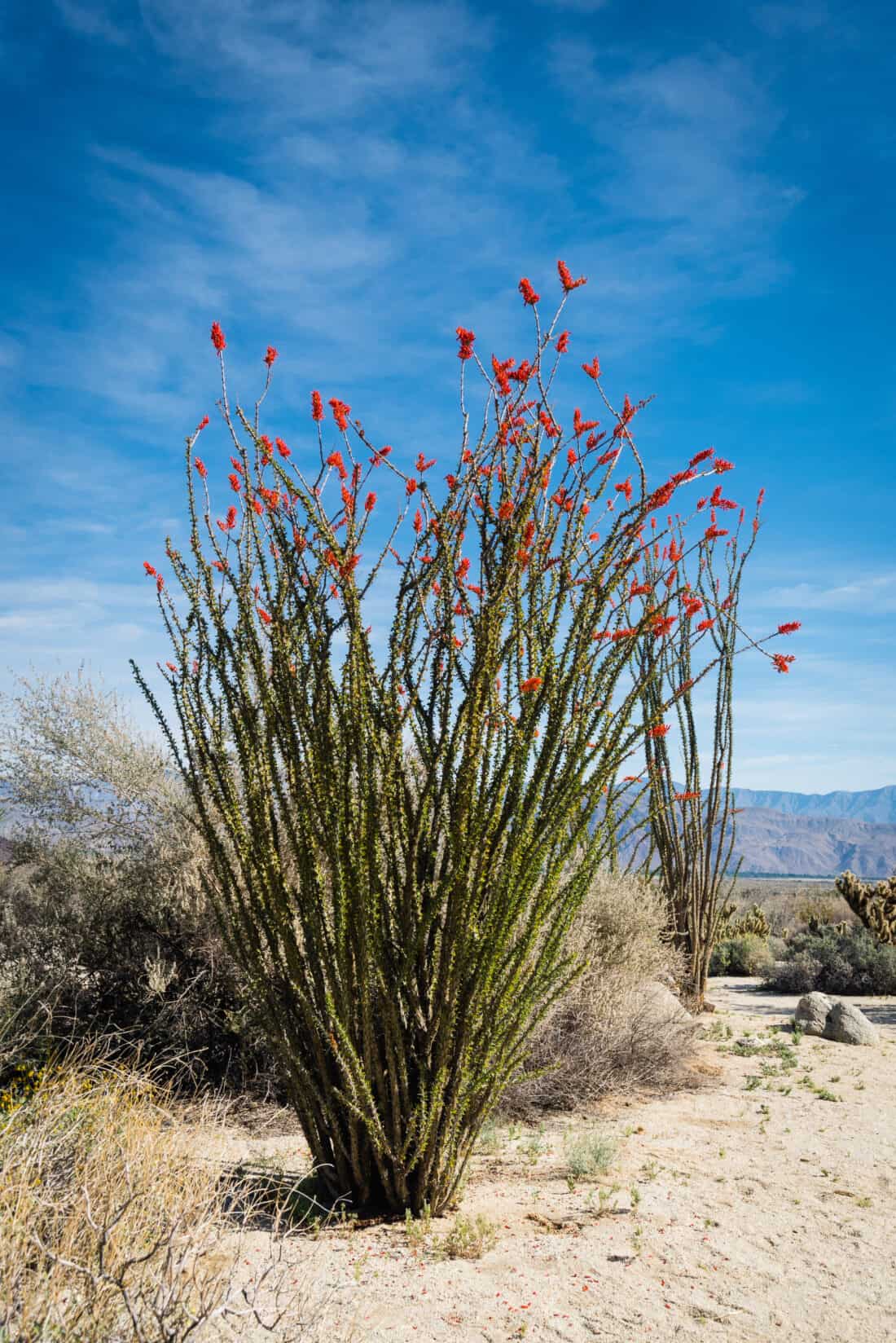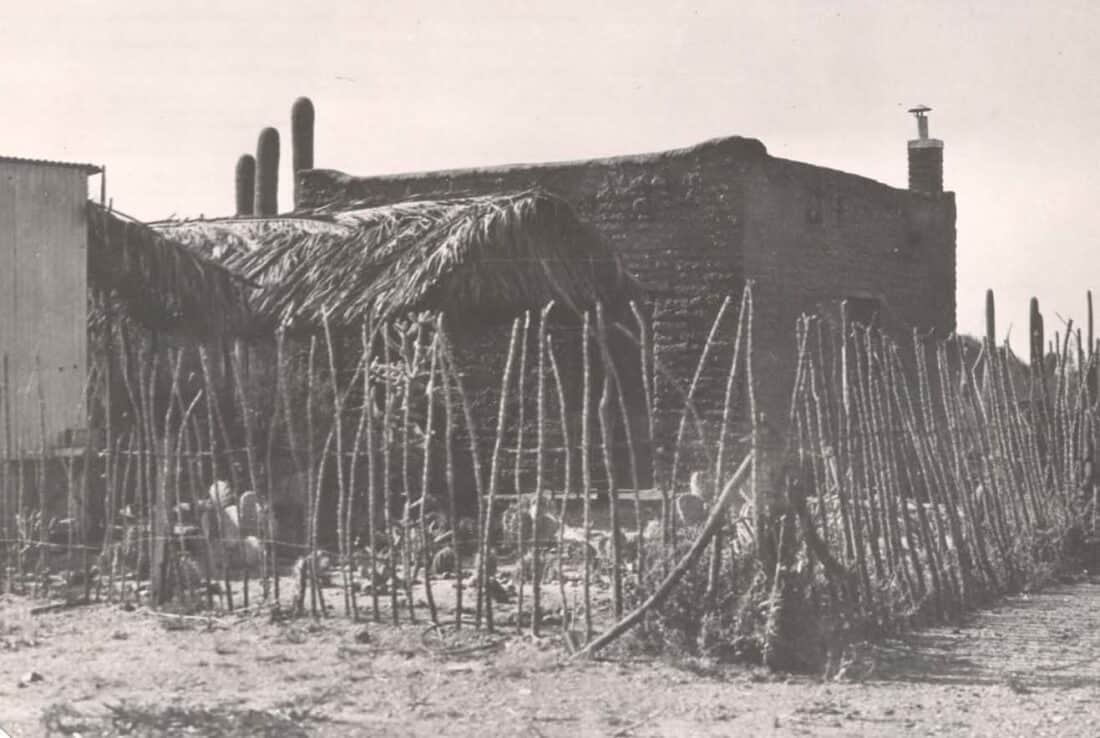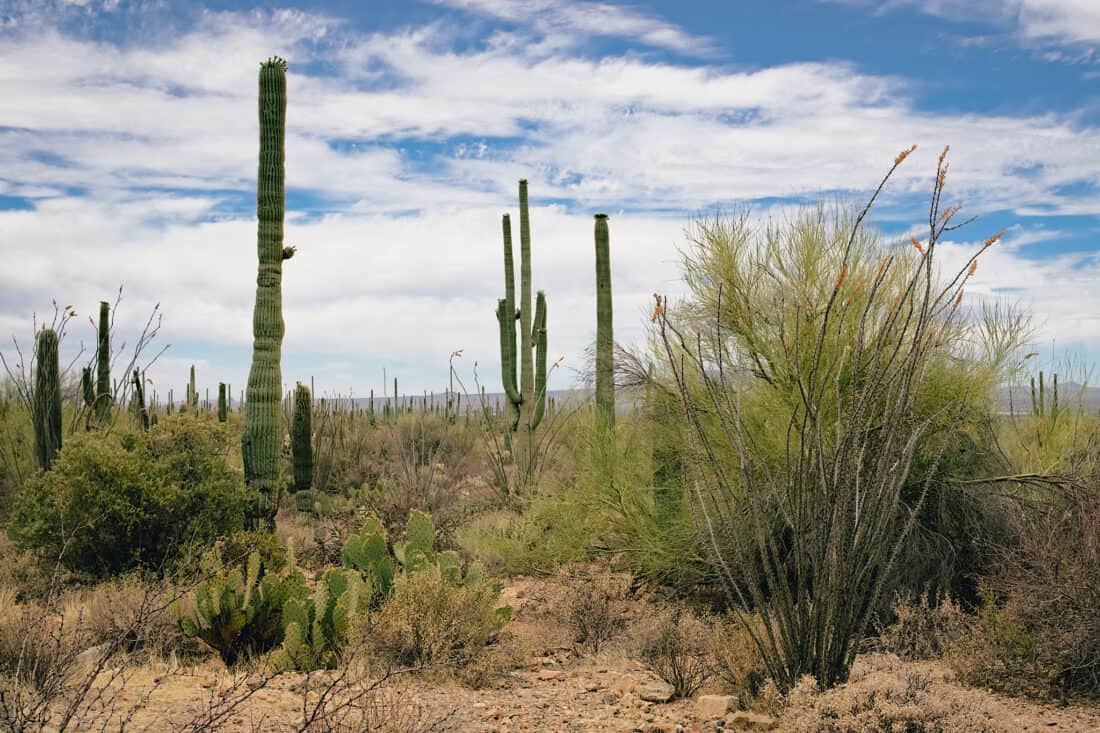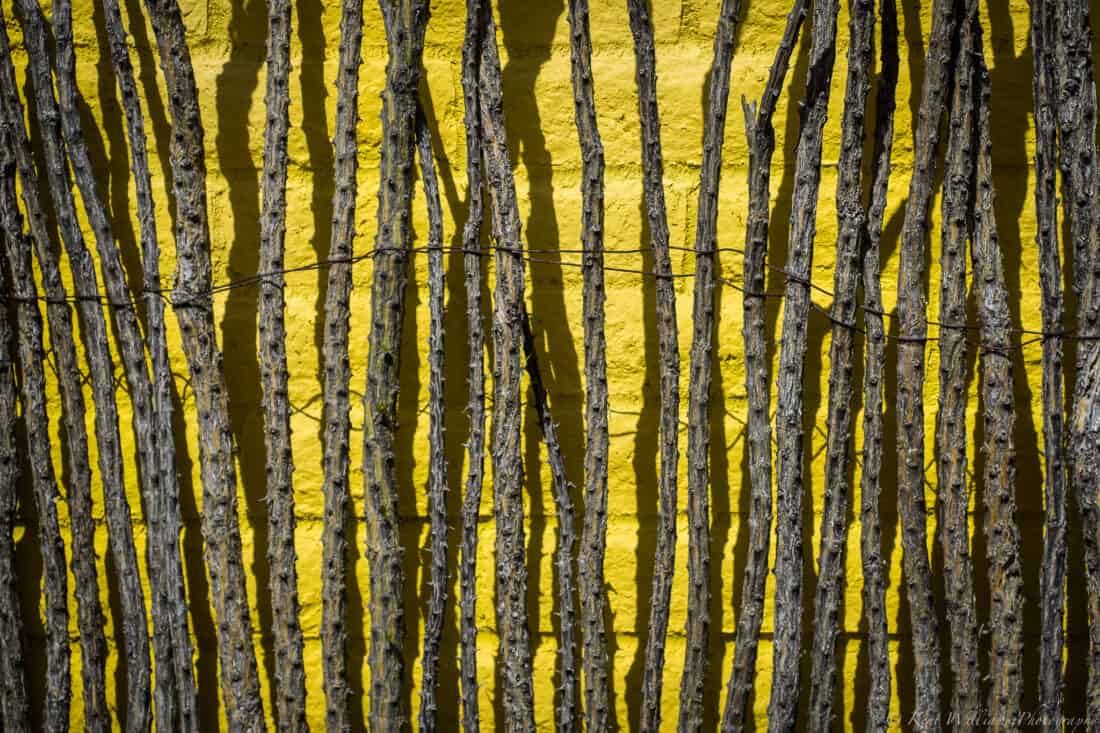I recently discovered a unique garden feature of the desert southwest – the ocotillo fence. The Ocotillo (Fouquieria splendens) is native to the desert southwest. It is a unique shrubby cactus-like plant (though it isn’t technically a cactus) that can be harvested for construction materials. Ocotillo is a striking deciduous shrub that can grow up to 20 feet tall. It features long, slender, woody branches that rise from the base of the plant and are covered in sharp spines.

Like many cacti, the plant comes alive, in a sense, when water is available. Ocotillo has leaves, but they are not traditional leaves; they are actually tiny, greenish clusters that appear along the length of its thorny branches, especially after rainfall. (the leaves look like boxwood leaves.) The plant may appear leafless (and dead) during dry periods, but it will re-green in the summer when the warm rains arrive.
The Ocotillo produces clusters of vibrant, tubular flowers that are usually bright red or orange, making a stunning contrast against the arid landscape. The flowers grow in dense clusters at the tips of the branches, attracting pollinators like hummingbirds.

Ocotillo Cactus panels for Construction
The branches of the Ocotillo can be made into a rustic fence that is common throughout the region. As a fence, the cut stems can root into the ground (in the same way that willow branches will root and grow) once they are in place, making a fence line that is not only more permanent but dynamic as the branches will seasonally green up, grow, and bloom.
The ocotillo panels are also used as roofing for ramadas and other garden features. (A ramada is the same thing as a pergola, except that the ceiling part is solid rather than open.).
Ocotillo features are mainly present in rural areas of the region. This type of localized construction – utilizing what is endemic to a place is a great way to capture the genius loci; it is used in Arizona and New Mexico and harvested to create living fences and other garden features.
This unique plant is a protected species, so collecting the branches in the wild is forbidden. If you are going to collect or harvest Ocotillo, you must ensure you have permission on private lands.

There are also suppliers like Rancho Lobos who are producers of ocotillo fencing, and this is how they describe the product:
These shrubs have been used by rural communities for ages in the construction of fences, ramadas and ceiling decorations. With the distinct feature that, when used for fencing, the ocotillo stems are buried about 4 to 6 inches into the ground, allowing them to root, providing a living fence that can grow up to 20 feet tall. For commercial purposes the stems are cut 2 to 3 feet from the base, choosing diameters between 3/4 to 2 inches, considered to be mature stems. They present little to no spines, except for the top part of the stem, which is trimmed to provide segments as uniform as possible 6 feet tall. Then they are woven together with a thin galvanized wire (cal. 18) to hold them together and allow growth. Making fence sections 5 feet long that can be easily rolled for transportation.

Wow!
That is one fence that would really take off here, if only it would survive!
The thorns would make it a great option to increase security and the fact that you can just cut and plant makes it incredibly easy to use! Very much like Williow indeed!
How fantastic. Thanks for sharing!
Ryan
What about a Belgian fence? A traditional espalier technique of weaving plants together for in a hatch pattern… http://www.finegardening.com/CMS/uploadedImages/Images/Gardening/Issues_61-70/041070055-01_med.jpg
Note, that these cacti only have no spines when they are about 2″ in diameter, until then then they are spined BEASTS. Very intimidating in the winter landscape.
im not tryin to be too critical but i dont believe ocatillo is a cactus. MM
Ocatillo is a succulent; easily mistaken for a cactus.
Ocotillos are actually trees/bushes.